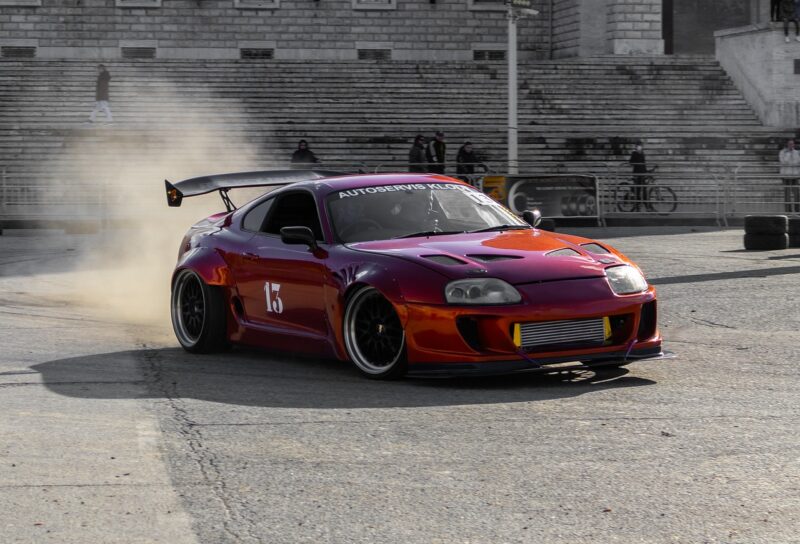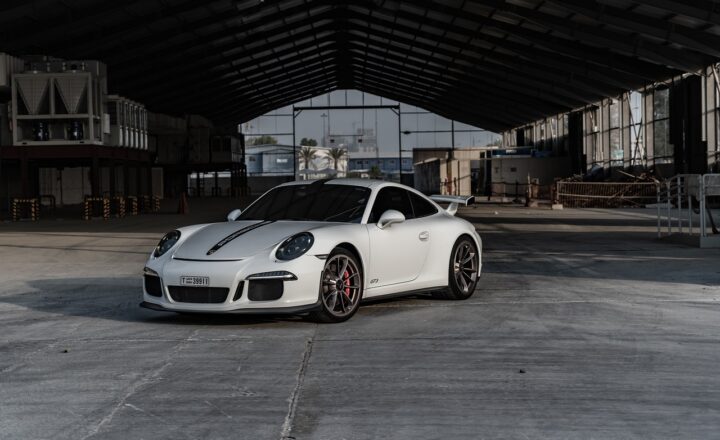
The Toyota Supra has long been held in high regard within the automotive community, known for its exceptional performance, striking design, and storied history. Since its introduction in the late 1970s, the Supra has transformed from a humble sports car to a revered icon among car enthusiasts and tuners alike. In this article, we will explore the evolution of the Toyota Supra, its place in the automotive landscape, and what makes it a modern tuner favorite.
1. The Birth of the Supra: A Legacy Begins
The Toyota Supra was first introduced in 1978 as the Toyota Celica Supra, offering a longer body and more powerful engine than its Celica counterpart. This model was built to compete with other sports cars of the era, like the Nissan Z cars. The initial hardware consisted of:
- Engine: A 2.6L inline-six engine that produced 110 horsepower.
- Transmission: A 4-speed automatic or 5-speed manual transmission.
- Design: A visually appealing coupe design with a focus on aerodynamics and comfort.
The Supra saw significant updates in the following generations, particularly with the arrival of the A70 model in 1986, which showcased turbocharged engines and improved aerodynamics. This transition solidified the Supra’s reputation as a performance sports car.
2. The Fourth Generation: The A80 Supra
The pinnacle of the Supra lineage is undeniably the fourth generation, the A80, produced from 1993 to 2002. It was during this period that the Supra truly became a legendary sports car due to its groundbreaking technology and performance capabilities:
- Engine Options: The iconic 2JZ-GTE engine, a 3.0L inline-six twin-turbocharged powerhouse that produced up to 276 horsepower (officially rated but known to be closer to 320 hp in reality).
- Performance: With a 0-60 mph time of just over 5 seconds, the A80 set the standard in its class and was capable of hitting impressive top speeds.
- Tech Features: The A80 introduced technologies like traction control and a multi-link suspension system, highlighting Toyota’s commitment to advancing automotive technology.
The A80 Supra would go on to see a resurgence in popularity in the late 2000s and early 2010s, particularly in drift and racing scenes, becoming a symbol of power and tunability.
3. The Rise of Tuning Culture
The Supra quickly became a favorite among tuners due to its robust platform. The 2JZ engine, with its iron block and steel internals, is renowned for its ability to handle significant power increases. This made it simple for enthusiasts to modify their vehicles and achieve remarkable performance gains; many tuners sought to push the envelope:
- Aftermarket Support: Extensive support from aftermarket companies led to a myriad of performance parts, from turbos to pistons, allowing owners to customize their vehicles to extreme levels.
- Dyno Days and Racing Events: Numerous Supra owners participated in drag racing, drifting, and time attack events, showcasing their modifications and performance enhancements.
- Community and Culture: The Supra community is vibrant and inclusive, with online forums, social media groups, and local meets focused on learning, sharing insights, and showing off builds.
Tuning not only made the Supra a high-performance machine but also forged a community that thrives today.
4. The 2020 Revival: A New Generation
In 2019, the automotive world was thrilled by the return of the Toyota Supra, now known as the A90. This new iteration was released with a blend of heritage styling and modern technology:
- Engine Specifications: The A90 debuted with a BMW-sourced 3.0L inline-six turbo engine producing approximately 335 horsepower.
- Performance Features: Advanced rear-wheel drive architecture and an 8-speed automatic transmission provided exhilarating performance and handling capabilities.
- Styling Choices: The A90 offers retro design cues reminiscent of the A80 while incorporating cutting-edge aerodynamics and technology for a modern look and feel.
The expectation surrounding the rebirth of the Supra was immense, and while the A90 polarized some enthusiasts, it quickly established itself as a formidable contender in the sports car landscape.
5. Why the Supra is a Modern Tuner Favorite
For many, the appeal of the Toyota Supra stems from its adaptability, performance, and iconic status. Here are several reasons why it continues to be a modern tuner favorite:
- Aftermarket Performance Parts: The A90 and older models have a vast array of aftermarket modifications available, allowing tuners to enhance both horsepower and aesthetics significantly.
- Community Engagement: Tuners frequently share their build journeys online, inspiring newcomers and creating a tight-knit community that values collaboration and support.
- Integration with Modern Technology: The latest Supra combines tuning potential with modern tech features such as adaptive suspension systems and digital interfaces while still providing a thrilling driving experience.
With these aspects in mind, it’s clear why the Supra remains in the hearts of car enthusiasts around the world.
6. Conclusion: The Enduring Legacy of the Toyota Supra
As it stands, the Toyota Supra has established itself as more than just a sports car; it’s a symbol of performance, tuning culture, and community. With a rich history spanning over four decades, a passionate fan base, and a continually evolving spirit, the Supra is poised to remain a staple in the automotive world. Whether as a classic A80, a modern A90, or future iterations, the Toyota Supra encapsulates the essence of what it means to be a true sports car icon.
Whether you’re a tuner looking to modify your vehicle for the track or a casual enthusiast eager to appreciate the Supra’s history, it’s undeniable that this car has left an indelible impact that resonates deeply within the car community and beyond.







